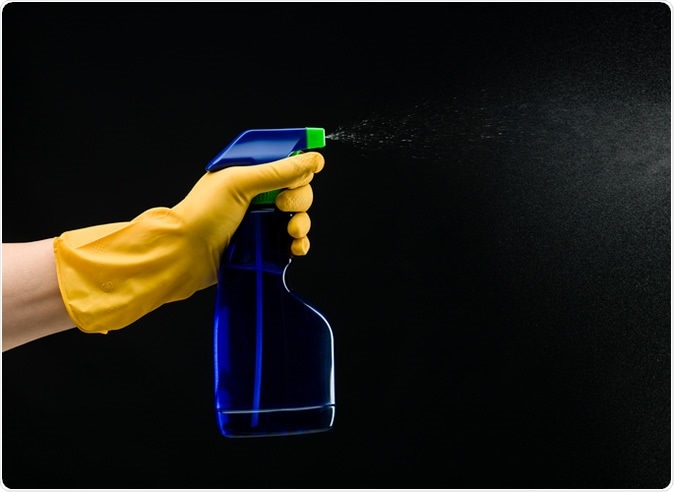While most of the United States is in lockdown due to the coronavirus disease (COVID-19) spread, reports of accidental poisoning linked to cleaning products have increased by 20 percent, the U.S. Centers for Disease Control and Prevention (CDC) says.
In a new report released by the CDC, there was an increase in calls to poison centers about exposures to cleaners and disinfectants for the first three months of the year. The highest number of calls were received in early March, during the time the coronavirus threat has reached the United States.
The National Poison Data System (NPDS), CDC, and the American Association of Poison Control Center surveillance team worked together to compare the number of exposure reported from January to March with the same period the previous year.

Image Credit: Comaniciu Dan / Shutterstock
Spike in poisoning calls
The country has the highest number of confirmed cases across the globe, with a staggering 840,476 infections and more than 46,600 deaths. Fear of being infected by the novel coronavirus may have helped drive the increase in poison center calls, with more Americans exposed to potentially toxic chemicals in cleaning products.
In total, the poison centers have received about 45,550 exposure calls linked to cleaners and disinfectants between January and March, compared with 37,822 during the same time last year. The pandemic is also reflected in the subjects of the calls, citing bleach as the specific cause of poisoning.
Poisoning calls about bleach increased by 62 percent, while calls about hand sanitizers and nonalcohol disinfectants spiked by 37 percent. The most common route of exposure is ingestion, while some forms of poisoning occurred through inhalation exposures. Inhalation exposure has seen the highest spike, with disinfectant inhalation calls more than doubling compared to the previous year. Meanwhile, children who are below five years old account for the highest percentage of calls in the three months.
The report included a pair of case studies showing two poisoning scenarios. The first case involved a woman who tried disinfecting all groceries she had bought from the store. She filled her sink with hot water, a 10-percent bleach solution, and vinegar. She left her items in the sink and noticed a chlorine-like smell. She then had a difficulty of breathing and wheezing. The woman was rushed to the emergency department for treatment.
Another case involved a young child who accidentally ingested a bottle of hand sanitizer. The child became dizzy and fell on the floor. She hit her head and was found unconscious. The preschool child was rushed to the hospital and was admitted to the pediatric intensive care unit. She recovered within two days and was sent home.
Improper use
Some of the cases reported were linked to improper use of cleaners and disinfectants, such as using more than the recommended on the label or mixing many chemical products. In some instances, not wearing protective gear, applying the solution in poorly ventilated areas, and leaving children unattended contribute to the spike in poisoning cases.
“To reduce improper use and prevent unnecessary chemical exposures, users should always read and follow directions on the label, only use water at room temperature for dilution (unless stated otherwise on the label), avoid mixing chemical products, wear eye and skin protection, ensure adequate ventilation, and store chemicals out of the reach of children,” the CDC said.
The CDC recommends that parents should lock cleaning products and detergent pods away, where children cannot see or get them. Further, always read the label and follow the instructions. Never mix chemicals and know the number of the poison control center in case of emergency.